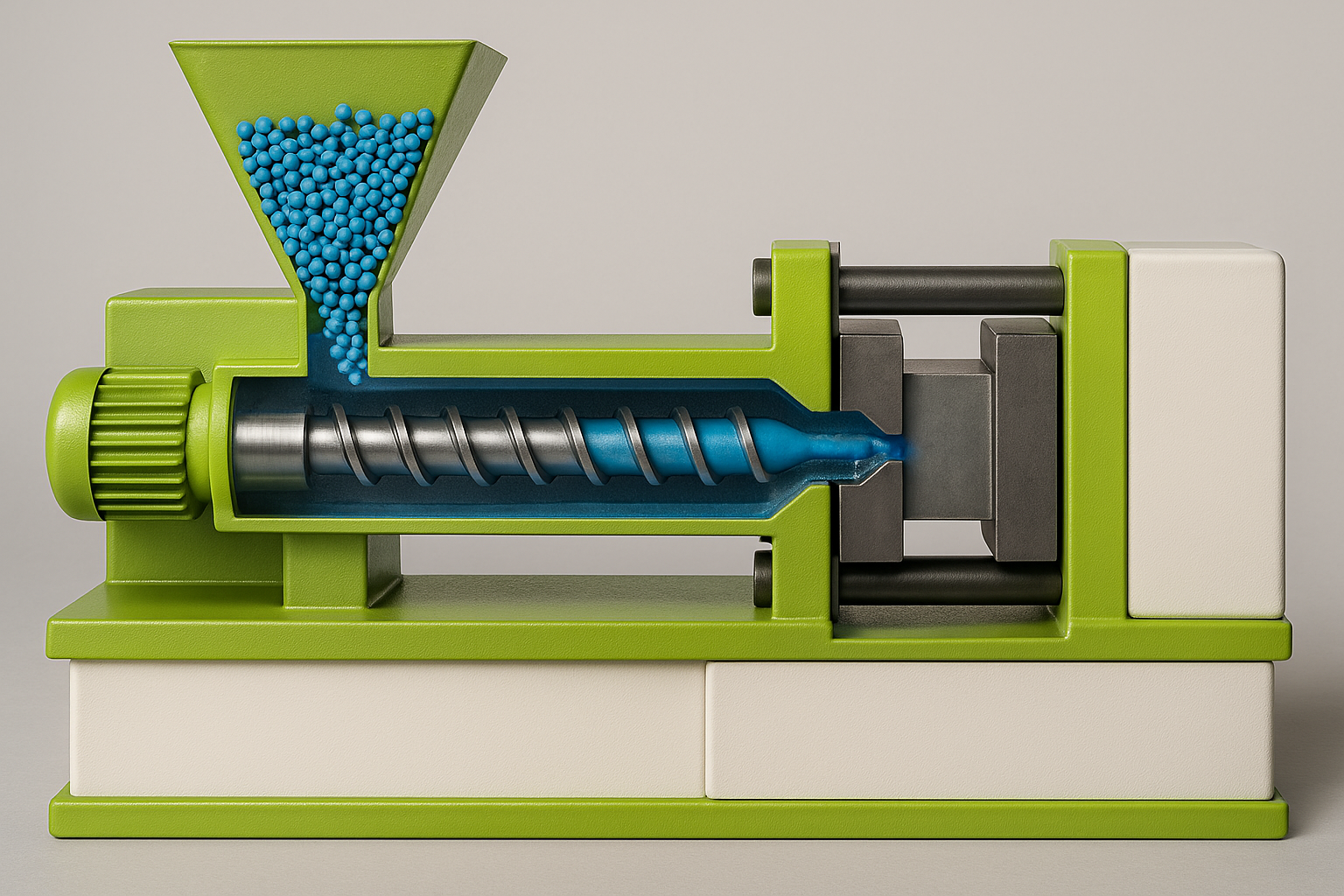When working with PVC, whether in injection molding or extrusion, screws and plasticizing barrels must have specific features to prevent material degradation and ensure efficient processing. Compared to other polymers, PVC requires special considerations due to its thermal sensitivity and tendency to release hydrochloric acid (HCl) during processing.
Special requirements for screws and barrels used with PVC, compared to other polymers:
- Corrosion resistance:
PVC can release hydrochloric acid during processing, which is corrosive to metals. Therefore, screws and barrels must be made from corrosion-resistant materials, such as special stainless steels or nickel alloys. PVD coatings are also used to significantly increase the surface hardness of the components. - Abrasion resistance:
PVC may contain fillers or reinforcements that are abrasive to the surfaces of screws and barrels. It is important that these components are made from wear-resistant materials, such as hardened steels or ceramic coatings. - Specific geometry:
The geometry of screws and barrels must be optimized for PVC processing. This includes the thread profile, the L/D ratio (length/diameter), and the presence of mixing and compression zones.- Moderate compression ratio:
PVC requires a lower compression ratio than other polymers to avoid local overheating and degradation.
Typically, the compression ratio ranges between 1.5:1 and 2.5:1 for rigid PVC and may be slightly higher for plasticized PVC. - Specialized screw profile:
Screws for PVC are usually barrier-type or have optimized mixing zones to prevent overheating and ensure uniform melting.
Excessive shearing of the material should be avoided, as it can trigger thermal degradation. - Air evacuation and degassing management:
The screw may include degassing zones to remove any gases or vapors formed during the melting phase.
- Moderate compression ratio:
- Temperature control:
PVC is a thermosensitive material that can degrade if exposed to excessively high temperatures. Therefore, screws and barrels must be equipped with precise and reliable temperature control systems.
In addition to these features, it is also important to consider screw rotation speed, injection or extrusion pressure, and other process parameters specific to PVC.
Characteristics of Plasticizing Barrels for PVC
- Highly corrosion-resistant materials:
Just like screws, barrels must be made of stainless steel, bimetallic materials, or corrosion-resistant coatings to withstand hydrochloric acid attack. - Precise temperature control:
PVC has a very narrow processing window:
- Excessively high temperatures lead to degradation.
- Too low temperatures prevent uniform melting.
Barrels must have well-distributed heating zones for optimal temperature regulation.
- Gas evacuation:
In extrusion processes, barrels can be equipped with degassing systems to remove HCl vapors and avoid defects in the final product.
Surface Treatments:
To further improve corrosion and wear resistance, screws and barrels can undergo surface treatments such as nitriding or coating with hard materials like tungsten carbide.
Main Differences Compared to Other Polymers
| Feature | PVC | Other Polymers (PP, PE, PS, ABS, etc.) |
| Compression ratio | Low (1.5:1 – 2.5:1) | Higher (3:1 – 4:1 for standard polymers) |
| Screw material | Stainless or coated (corrosion-resistant) | Standard or nitrided steel |
| Temperature control | Very precise (to prevent degradation) | Less critical, more tolerant |
| Degassing | Necessary (to remove HCl) | Not always required |
| Screw geometry | Specific to avoid local overheating | Standard or optimized for high throughput |
Conclusion:
Screws and barrels for PVC processing must be designed to minimize thermal degradation and corrosion. Unlike other polymers, PVC requires screws with low compression ratios, materials resistant to hydrochloric acid, and highly precise temperature control. In extrusion systems, the presence of degassing systems is essential to ensure a stable process and defect-free final products.


